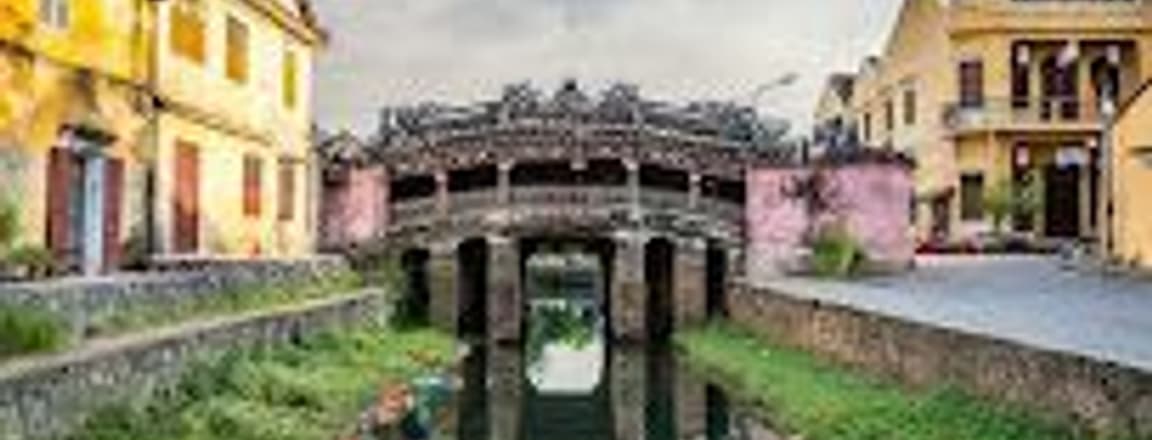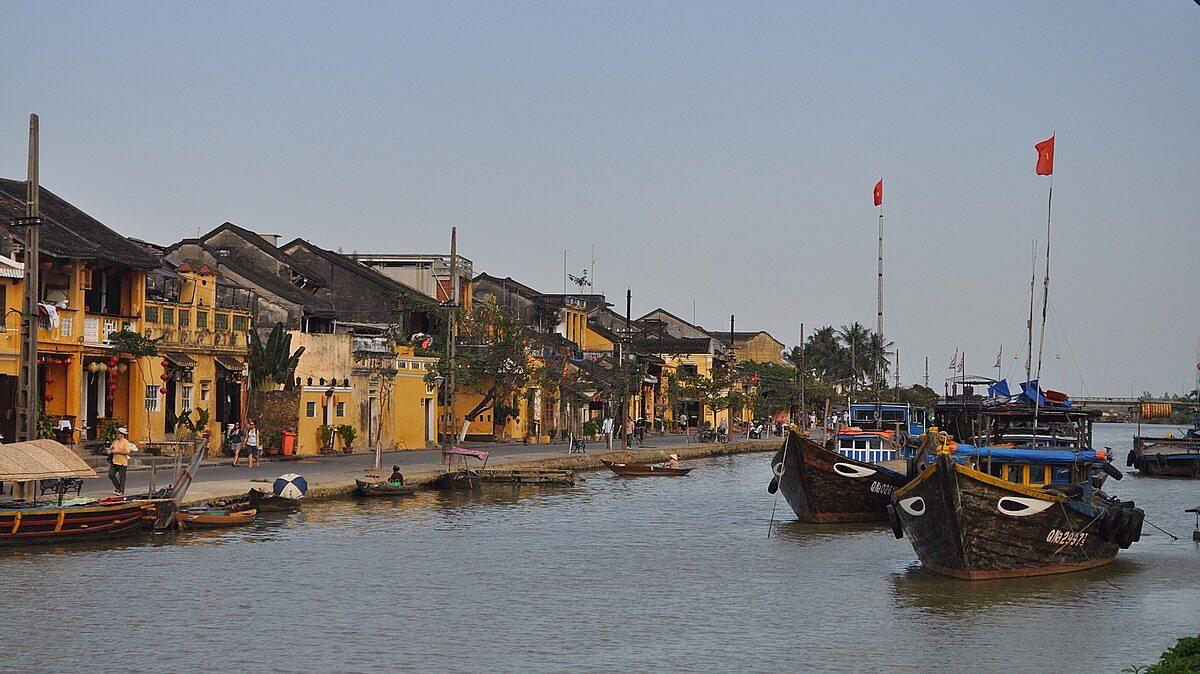
Hoi An Travel Guide : UNESCO Ancient Town, Best Beaches & Local Food

Hoi An, a UNESCO World Heritage Site in Central Vietnam, offers travellers an authentic blend of ancient architecture, vibrant lantern-lit streets, and coastal beauty. Located 30km from Da Nang, this former trading port preserves 15th-19th century merchant houses, Japanese and Chinese influences, and traditional crafts. Whether exploring Hoi An Ancient Town's cobblestone streets or relaxing at An Bang Beach, this Hoi An travel guide covers everything you need: top attractions, local food, accommodation options, transportation, and practical costs for 2026.
Why Visit Hoi An: UNESCO Heritage & Authentic Vietnamese Culture

A Preserved Trading Port
Hoi An Ancient Town earned UNESCO recognition in 1999 for its remarkably intact architectural heritage. The town showcases Vietnamese, Chinese, Japanese, and European influences through its merchant tube houses, assembly halls, and iconic Japanese Covered Bridge.
What makes Hoi An unique:
- Living heritage: Unlike museum towns, Hoi An remains a functioning community with daily markets and traditional crafts
- Architectural diversity: 15th-century structures alongside French colonial buildings
- Cultural authenticity: Local artisans still practice lantern-making, tailoring, and ceramic crafts passed down generations
Traditional Crafts
Hoi An's reputation for custom tailoring draws visitors worldwide. Skilled tailors create suits, dresses, and áo dài (traditional Vietnamese dress) within 24-48 hours. The town also hosts lantern workshops, pottery villages, and organic farming communities accessible via short bicycle rides.
Top Historic Sites in Hoi An Ancient Town 2026
1. Japanese Covered Bridge (Chùa Cầu)
Built in 1593 by Hoi An's Japanese trading community, this iconic bridge connects two neighborhoods and houses a small temple. Visit early morning (6-7am) or sunset for fewer crowds and optimal photography lighting.
2. Historic Merchant Houses
- Tan Ky House: 200-year-old family home showcasing Chinese and Japanese architectural elements
- Phung Hung House: 18th-century trading house with beautiful wooden balconies
- Duc An House: Features antique furniture and family heirlooms
Note: Entry requires Ancient Town ticket: 120,000 VND, valid for 5 attractions
3. Chinese Assembly Halls
- Fujian Assembly Hall: Ornate 17th-century hall with intricate ceramic decorations
- Cantonese Assembly Hall: Features detailed woodcarvings and courtyards
- Hainan Assembly Hall: Memorial to Chinese merchants
4. Thu Bon River & Night Markets
The Thu Bon River waterfront transforms after sunset with floating lanterns and riverside restaurants. The Hoi An Night Market (5pm-11pm daily) offers street food, handicrafts, and cultural performances. Consider a traditional sampan boat ride (50,000-100,000 VND per person) for a unique perspective.
Day Trips from Hoi An: My Son Sanctuary, Villages & Beaches
My Son Champa Temple Complex: Entrance, Tours & Tips
This ancient Champa temple complex (7th-13th century) sits 40km west of Hoi An. The Hindu ruins rival Cambodia's Angkor Wat in historical significance.
- Entrance fee: 150,000 VND
- Tour prices: 600,000-1,200,000 VND (includes transport, guide)
- Duration: 4-5 hours (half-day trip)
- Best time: Early morning (6-8am) before heat and crowds
Tra Que Vegetable Village: Organic Farming & Cooking Classes
This organic farming village 3km from Hoi An Ancient Town offers hands-on cooking classes and farm tours.
- Entrance fee: 35,000 VND
- Cooking class: 400,000-700,000 VND (includes meal)
- Activities: Planting, harvesting, and traditional cooking methods
Hoi An Food Guide 2026: Must-Try Dishes & Best Restaurants
- Cao Lau: Unique noodle dish made with water from Ba Le Well, giving distinctive flavor. Topped with pork, herbs, and rice crackers. Try at Cao Lau Thanh (22 Thai Phien St), Ms. Ly Cafe (22 Nguyen Hue St).
- White Rose Dumplings (Bánh Bao Vạc): Translucent steamed dumplings shaped like roses, filled with shrimp. Try at white Rose Restaurant (533 Hai Ba Trung St) .
- Bánh Mì Phượng: Vietnam's most famous bánh mì, featured by Anthony Bourdain. Savour at 2B Phan Chu Trinh St.
- Com Ga (Chicken Rice): Hoi An's version includes turmeric-infused rice with shredded chicken and herbs. Visit Hoi An’s local restaurants to try this mouth-watering dish.
Where to Stay in Hoi An: Budget, Mid-Range & Luxury Hotels
Category | Area | Price (per night)VND | Features |
Budget Hostels | Old Town vicinity | 150,000-300,000 | Dorms, basic rooms, social atmosphere |
Mid-Range Hotels | Riverside, Old Town edges | 600,000-1,500,000 | Boutique design, pool, breakfast included |
Luxury Resorts | An Bang/Cua Dai Beach | 2,500,000-6,000,000+ | Beachfront, spa, shuttle service |
Homestays | Cam Thanh village | 300,000-700,000 | Local family experience, authentic setting |
Booking tips: Reserve 2-3 months ahead for February-April and September-November peak seasons. Old Town hotels offer walkable access but can be noisy during lantern festivals.
Getting to Hoi An: Da Nang Airport & Transportation
From Da Nang International Airport
Distance: 30km (45-60 minutes)
Alternate Options:
- Private taxi: 350,000-450,000 VND (fixed meter rate)
- Grab app: 300,000-400,000 VND (pre-booked)
- Airport shuttle bus: 150,000 VND (hourly departures)
- Private transfer: 400,000-600,000 VND (pre-arranged, door-to-door)
Getting Around Hoi An
- Bicycle rental: 30,000-50,000 VND/day (best for Old Town and surrounding villages)
- Motorbike rental: 100,000-150,000 VND/day (for beach trips and My Son)
- Walking: Old Town is compact and pedestrian-friendly
- Grab/taxi: 30,000-80,000 VND for short trips
Hoi An Daily Budget Breakdown 2026: Budget, Mid-Range & Luxury
Expense Category | Budget(VND) | Mid-Range(VND) | Luxury(VND) |
Accommodation | 200,000 | 1,000,000 | 4,000,000 |
Meals (3x) | 150,000 | 400,000 | 800,000 |
Ancient Town Ticket | 120,000 | 120,000 | 120,000 |
Transport | 50,000 | 150,000 | 300,000 |
Activities | 100,000 | 500,000 | 1,000,000 |
Total/Day | 620,000 | 2,170,000 | 6,220,000 |
Best Time to Visit Hoi An 2026: Weather, Festivals & Seasons
Peak Season (February-April):
Dry weather, warm temperatures (25-30°C), ideal for beach and sightseeing. Book accommodation 2+ months ahead.
Shoulder Season (September-November):
Lower prices, fewer tourists, pleasant weather post-monsoon. Best value period.
Avoid (October-December):
Heavy rainfall, flooding risk. Some attractions may close temporarily.
Full Moon Lantern Festival:
Monthly on the 14th lunar calendar day. Hoi An Ancient Town lights only lanterns, creating a magical atmosphere. Accommodations fill quickly.
Conclusion: Plan Your Hoi An Adventure
Hoi An seamlessly blends Vietnam's rich heritage with modern traveler amenities, making it Central Vietnam's must-visit destination. From exploring UNESCO Ancient Town's lantern-lit streets to savoring authentic Cao Lau noodles, cycling through Tra Que's organic farms, and unwinding at An Bang Beach, every experience connects you to local culture. Whether planning a budget backpacking trip or luxury escape, Hoi An's compact geography and diverse attractions accommodate all travel styles. Plan your next trip with Pickyourtrail’s best Hoi An tour packages for a hassle-free trip experience in 2026.
FAQs
1. Is Hoi An safe for solo travelers?
Yes. Hoi An is one of Vietnam’s safest cities for solo and female travelers. Stick to lit areas at night, use Grab or licensed taxis, and keep valuables secure in busy markets
2. How many days do you need in Hoi An?
Spend 2-3 days in Hoi An to explore the Ancient Town, visit My Son Sanctuary, relax at An Bang Beach, and enjoy the food scene. One day is rushed; 4-5 days suit slower travel or tailoring orders.
3. Can you use US dollars or credit cards in Hoi An?
Vietnamese Dong (VND) is preferred. Hotels and upscale restaurants accept cards, but markets and street vendors are cash-only. ATMs are widely available. Avoid paying in USD due to poor exchange rates.
4. Hoi An Ancient Town vs. modern Hoi An , what’s the difference?
Hoi An Ancient Town is the UNESCO heritage core with traditional buildings and ticketed entry (120,000 VND). The surrounding modern Hoi An offers newer hotels, cafés, and local neighborhoods.
5. Are Hoi An tailors worth it?
Yes. Tailors in Hoi An deliver high-quality custom clothing at affordable prices (suits from 2.5M–5M VND). Choose reputable shops like Yaly, Kimmy, or A Dong Silk and allow 2-3 days for fittings.
Update your location?



